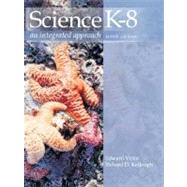
| Teaching Science K-8 | |
| Teaching Science in Grades K-8: Then and Now | |
| Goals and Objectives for K-8 Science | |
| Understanding the Nature of Science and Sciencing | |
| Questioning and Other Behaviors that Provide the Foundation for Active Science Learning | |
| Strategies for Helping Children Learn Science | |
| Selecting and Using Media and Other Instructional Aids and Resources | |
| Planning the Instruction | |
| Assessing and Reporting Student Achievement | |
| Basic Science Information, Learning Activities, and Other Resources | |
| Earth and the Universe | |
| The Universe | |
| The Earth | |
| Water, Weather, and Climate | |
| Living Things | |
| Plants | |
| Neither Plant nor Animal | |
| Animals | |
| The Human Body | |
| Matter, Energy, and Technology | |
| Changes in Matter and Energy | |
| Friction and Machines | |
| Heat, Fire, and Fuels | |
| Sound | |
| Light | |
| Magnetism and Electricity | |
| Name Index | |
| Subject Index | |
| Table of Contents provided by Publisher. All Rights Reserved. |
The New copy of this book will include any supplemental materials advertised. Please check the title of the book to determine if it should include any access cards, study guides, lab manuals, CDs, etc.
The Used, Rental and eBook copies of this book are not guaranteed to include any supplemental materials. Typically, only the book itself is included. This is true even if the title states it includes any access cards, study guides, lab manuals, CDs, etc.